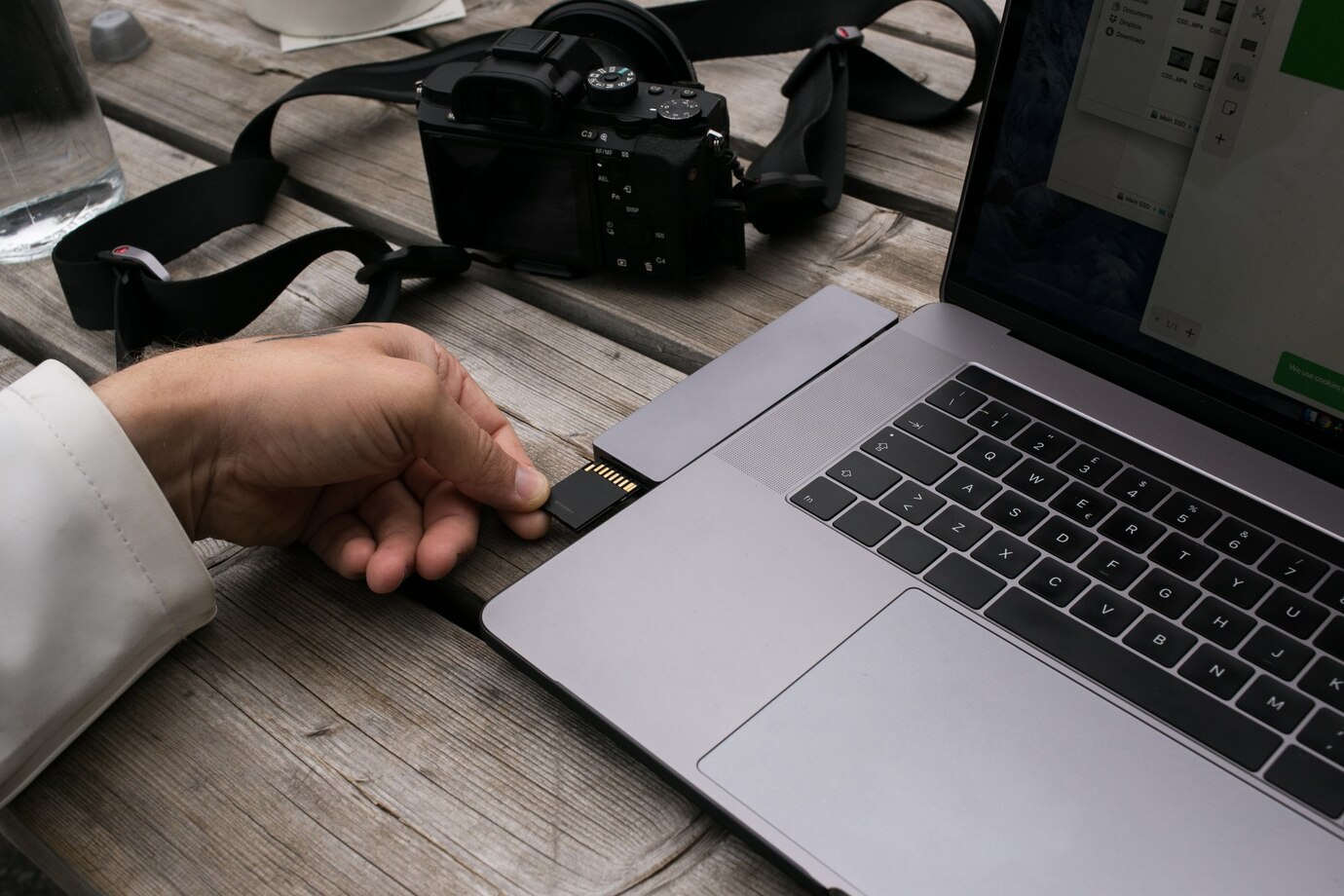Gone are the days of lugging around hefty binders and shuffling through endless stacks of paper. In the whirlwind of the digital age, documents have adopted a new form – the humble (or not-so-humble) photograph. From submitting loan applications to sharing medical records, photos have become the go-to method for transmitting vital information. But with this convenience comes a new set of challenges. Not all photos are created equal, and a blurry, pixelated mess can quickly derail your document’s journey. Fear not, intrepid photo-submitters! This paper delves into the dos and don’ts of digital photo submissions, ensuring your documents arrive clear, crisp, and ready to conquer any digital hurdle.
Understanding the Requirements for Digital Photos
In the contemporary era, the utilization of digital photos for document submissions has become increasingly prevalent, revolutionizing traditional practices. As we delve into the nuances of this transition, it is imperative to grasp the intricate requirements that govern the acceptance and legitimacy of digital photos in official documentation. The shift from physical to digital formats necessitates an appreciation of various factors that influence the efficacy of this medium.
Resolution stands out as a pivotal aspect in the realm of digital photos. The precision and clarity of details captured in an image are directly proportional to its resolution. This is particularly crucial in documents requiring meticulous identification, such as passports and driver’s licenses. Insufficient resolution can compromise the accuracy of facial recognition technologies and other verification processes, potentially leading to undesirable consequences.
Moreover, the format of digital photos plays a critical role in their acceptance for official documentation. Different platforms and organizations may have varying specifications regarding the acceptable file formats. Understanding and adhering to these guidelines ensure seamless compatibility and prevent unnecessary hurdles in the submission process.
Beyond technical specifications, the background against which the digital photo is captured is another significant consideration. Well-lit environments with neutral backgrounds are preferred to enhance the clarity of the subject. Shadows, distractions, or inappropriate backgrounds can detract from the professionalism and accuracy of the submitted document.
In essence, the first pillar of navigating the landscape of digital photos for document submissions lies in comprehending these multifaceted requirements. The interplay between resolution, format, and background sets the foundation for the subsequent dos and don’ts, guiding individuals and organizations towards effective and compliant use of digital photos in official documentation.
Dos for Digital Photo Submissions
In the realm of digital photo submissions, adhering to a set of recommended practices is essential to ensure the accuracy, acceptability, and professionalism of the submitted documents. The following paragraphs delve into key dos for digital photo submissions, offering nuanced insights into each aspect.
Maintaining a high resolution is paramount when capturing digital photos for official documentation. A higher resolution ensures that intricate details are preserved, contributing to the accuracy of identification processes. For instance, in passports, where facial recognition is a common practice, a high-resolution photo becomes instrumental in facilitating seamless and reliable identification.
Proper lighting and background selection are crucial elements that contribute to the overall quality of digital photos. Well-lit environments, preferably with natural light, eliminate shadows and enhance the visibility of facial features. Additionally, choosing a neutral background minimizes distractions, emphasizing the subject’s presence in the document. This attention to lighting and background creates a professional and standardized look across submissions.
Consistency with guidelines provided by authorities or organizations is a fundamental practice in digital photo submissions. These guidelines may encompass facial expressions, clothing, or specific poses. Adhering to these standards ensures uniformity in submissions, streamlining the verification process and reducing the likelihood of rejection due to non-compliance.
Secure transmission of digital photos is a paramount consideration, especially when submitting sensitive documents online. Utilizing encrypted channels guarantees the confidentiality and integrity of the submitted materials, safeguarding against unauthorized access or tampering. This security measure becomes particularly critical in environments where privacy and data protection are paramount.
| Aspect | Recommendation | Importance |
| Resolution | Ensure high resolution for detailed and accurate images. | Critical for accurate identification processes. |
| Lighting and Background | Choose well-lit environments with neutral backgrounds. | Enhances visibility and maintains a professional look. |
| Consistency with Guidelines | Adhere to specific guidelines for facial expressions, etc. | Ensures uniformity and streamlines the verification. |
| Secure Transmission | Prioritize secure and encrypted channels for submission. | Essential for safeguarding against unauthorized access. |
Don’ts for Digital Photo Submissions
Navigating the landscape of digital photo submissions requires not only an understanding of best practices but also a keen awareness of potential pitfalls. The following points highlight critical “don’ts” that individuals and organizations should avoid when engaging in the process of submitting digital photos for official documentation.
Photo Manipulation:
- Resist the temptation to manipulate digital photos using software tools to alter facial features or backgrounds. Authenticity is paramount in document submissions, and any form of manipulation may lead to rejection or, in some cases, legal consequences.
- Avoid adjusting facial expressions, lighting, or any other element that could compromise the integrity of the original image.
Low-Quality Images:
- Refrain from submitting digital photos with low resolution, as this can hinder the accuracy of identification processes. Blurred or pixelated images may result in document rejection or additional scrutiny.
- Ensure that the image quality meets the specified standards to facilitate smooth verification procedures.
Inconsistent Information:
- Double-check and avoid inconsistencies between the information in the digital photo and the document’s requirements. Mismatched facial features, inaccurate details, or discrepancies in background elements may raise concerns and lead to rejection.
- Ensure that the submitted digital photo aligns seamlessly with the established guidelines and information provided in the accompanying documentation.
Navigating these “don’ts” is crucial to maintaining the credibility and reliability of digital photo submissions. Adhering to ethical practices and avoiding common pitfalls ensures a seamless process and enhances the likelihood of successful document
Best Practices for Uploading
Efficient and secure uploading of digital photos is a critical component of the document submission process. Employing best practices ensures not only the successful transmission of files but also the integrity of the submitted documentation.
- File Format Compatibility: Utilize widely accepted and standardized file formats such as JPEG or PNG for digital photo submissions. Verify the compatibility of the selected format with the receiving system or organization. Avoid using proprietary or less common formats to minimize the risk of compatibility issues during the submission process.
- File Naming Conventions: Adopt a standardized and clear file naming convention for digital photos. This practice facilitates easy identification, especially when multiple documents are being submitted. Include relevant information in the file name, such as the document type, date, or a unique identifier, to streamline organization and retrieval.
- Confirmation and Verification: After uploading digital photos, seek confirmation of the successful submission. Many platforms provide confirmation notifications or reference numbers upon completion. Verify the accuracy of the uploaded images by cross-referencing them with the original documents. This step ensures that the intended documents are received and meet the required standards.
- Secure Transmission Channels: Prioritize the use of secure and encrypted channels when uploading digital photos online. This safeguards the confidentiality and integrity of sensitive documents during transmission. Avoid using public or unsecured networks for uploads to prevent unauthorized access or potential data breaches.
- Backup Copies: Create backup copies of the digital photos before submission. This precautionary measure helps in case of accidental loss or corruption of files during the uploading process. Store backup copies securely, adhering to data protection and privacy standards applicable to the type of documentation being submitted.
In essence, adopting these best practices contributes to a seamless and reliable uploading process for digital photos. By ensuring compatibility, maintaining clear organization, confirming successful submissions, prioritizing security, and having backup measures in place, individuals and organizations can navigate the complexities of digital photo submissions with confidence and efficiency.

